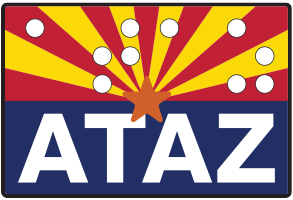Useful links PDF version 422kb, 1 page
Overview
Persons with ergonomic/physical access disabilities may have hidden or visible physical limitations. For example, persons with back injuries or repetitive stress conditions may require therapeutic positioning to manage their disability (as opposed to preventative positioning to avoid an injury). In such cases, seating supports and desk heights are strategically prescribed in order to minimize the effects of gravity on weakened or compromised postures. These may be hidden disabilities however, a prescribed and properly fit ergonomic chair and desk height may be the assistive technology that allows the person to be productive at a workstation for longer periods of time. In other cases, mobility equipment may be required such as a wheelchair, scooter or other mobility device which may aid or take the place of ambulation (walking). In still other cases, upper extremities (arms, hands, fingers) are compromised or missing and accommodations are required.
A wide range of medical conditions may result in ergonomic or physical access limitations. These may include but not be limited to spinal stenosis and disk ruptures, carpal tunnel syndrome, SCI (Spinal Cord Injury), MD (Muscular Dystrophy), SMA (Spinal Muscular Atrophy), CP (Cerebral Palsy), MS (Multiple Sclerosis), ALS (Arterial amputation, congenital conditions that result in missing limbs, etc. Daily living accommodations may mean bathroom modifications, ramps, accessible doorways, transportation, and computer access technologies.
Service specialties and accommodations specific to physical access limitations may include:
Medical Aspects
Persons who have sustained a permanent disability as a result of an injury (such as spinal cord injury or amputation) would undergo acute medical rehabilitation until the condition is stable. Other individuals, whose disability was from birth or was slowly progressive, may have specialty supports depending on the diagnosis. The Arizona Resources for Ergonomic/Physical Access Disabilities lists disability associations and programs.
Environmental Access
The ADA (Americans with Disabilities Act) has greatly improved environmental access for persons with mobility impairments who use wheelchairs and other supports. Ramps, power accessible doors, bathrooms with enough space to turn in a wheelchair and with grab bars, accessible sinks, soap and dryers are commonly found in government and commercial locations. However, these access features are not always present in the home or private sector work location.
Assistive Technology
Mobility related disabilities are the most prevalent disability for adults in the US. Assistive technology supports that are medically necessary such as wheelchairs and scooters may be funded through the health plan; employment related AT may be funded by Vocational Rehabilitation Services and/or ADA or privately purchased.
Assistive Technology to support Ergonomics/Physical Access [AT-Ergo/PH]
Mobility Devices:
- Canes/Crutches
- Prosthetics/Orthotics
- Wheelchairs/Scooters
- Complex Rehabilitation Technologies
Daily Living:
- Reachers/Grabbers
- Shower chairs/bath chairs
- fat or universal grip utensils and tools
- velcro
Computer Access:
- Alternative keyboards
- Alternative Mice
- Speech Recognition
- Word prediction
 ATArizona.com
ATArizona.com 